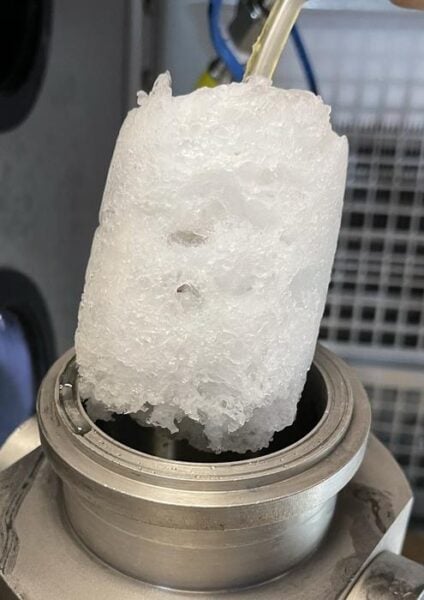Researchers at The University of Texas at Austin have created a new method to store carbon dioxide that outpaces current techniques and eliminates the need for harmful chemical accelerants. This development could significantly boost efforts to combat climate change by removing greenhouse gases from the atmosphere.
The study, published in ACS Sustainable Chemistry & Engineering, details a process for rapidly forming carbon dioxide hydrates – ice-like materials capable of trapping CO2 in the ocean. This method prevents the captured carbon from re-entering the atmosphere and contributing to global warming.
A ‘Plan B’ for Gigascale Carbon Storage
Current carbon storage methods typically involve injecting CO2 into underground reservoirs. While this approach can increase oil production, it comes with risks such as leakage, groundwater contamination, and potential seismic activity.
“We’re staring at a huge challenge — finding a way to safely remove gigatons of carbon from our atmosphere — and hydrates offer a universal solution for carbon storage. For them to be a major piece of the carbon storage pie, we need the technology to grow them rapidly and at scale,” said Vaibhav Bahadur, a professor in the Walker Department of Mechanical Engineering who led the research. “We’ve shown that we can quickly grow hydrates without using any chemicals that offset the environmental benefits of carbon capture.”
The new technique achieves a sixfold increase in hydrate formation rate compared to previous methods. This speed, combined with the absence of chemical promoters, makes it more feasible for large-scale carbon storage operations.
Magnesium: The ‘Secret Sauce’ for Faster Carbon Capture
The key to this breakthrough lies in the use of magnesium as a catalyst, eliminating the need for chemical promoters. High-flow rate bubbling of CO2 in a specific reactor configuration further enhances the process. Importantly, the technology works well with seawater, simplifying implementation by avoiding complex desalination processes.
“Hydrates are attractive carbon storage options since the seabed offers stable thermodynamic conditions, which protects them from decomposing.” Bahadur said. “We are essentially making carbon storage available to every country on the planet that has a coastline; this makes storage more accessible and feasible on a global scale and brings us closer to achieving a sustainable future.”
Beyond carbon sequestration, this ultrafast hydrate formation technique could have applications in desalination, gas separation, and gas storage, offering versatile solutions across various industries.
The University of Texas has filed for two patents related to this technology, and the research team is considering launching a startup to commercialize their innovation. This development represents a significant step forward in the global effort to mitigate climate change through efficient carbon capture and storage.


